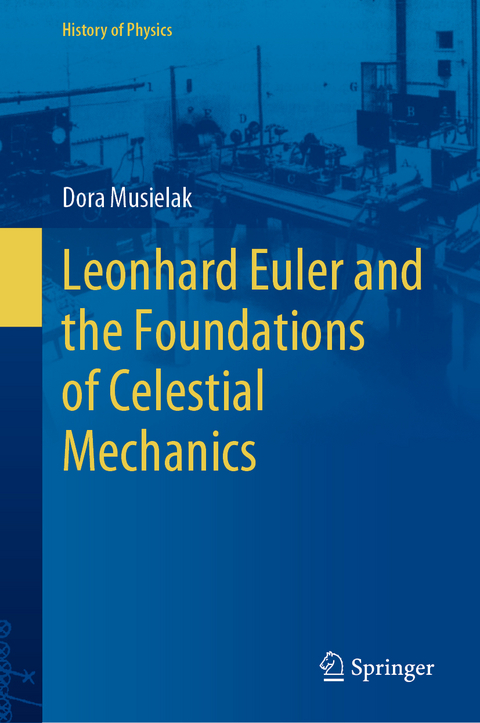
Leonhard Euler and the Foundations of Celestial Mechanics
Springer International Publishing (Verlag)
978-3-031-12321-4 (ISBN)
Dora Musielak is an aerospace scientist, the recipient of two NASA research fellowships and other honors. She is a Research Professor at the University of Texas in Arlington and teaches mathematical methods to graduate students in physics and engineering. Dora Musielak is also a historian of mathematics and science. Her research focuses on both the lives of mathematicians and the scientific developments in the eighteenth and nineteenth centuries. A central topic of her scholarly exploration is the mathematical ideas that germinated and grew in Europe, starting with Euler and Lagrange, in order to discover how mathematics led to developments in physics and astronomy. Her research also includes the mathematical formulations for classical (Newtonian) and modern (Einsteinian) quantum mechanics. Dora Musielak is the author of Sophie’s Diary (MAA Press), and her latest book published in Springer Biographies is a scholarly memoir of French mathematician Sophie Germain, describing her contributions to mathematics and her efforts to prove Fermat’s Last Theorem. The present book is Dora Musielak’s tribute to the blind mathematician who saw infinity.
Stella Nova: Euler's Study of Newtonian and Cartesian Physics.- Euler's Grand Tour.- Watching the Northern Light: Basic Analysis of Celestial Mechanics.- Rhythms of the Sea: A Theory of Tides.- Beyond the Prussian Sky: Theories of Motion in the Solar System.- Cosmic Wanderers: Motion of Comets and Comet Tail Theory.
"The book is very readable ... . The technical material is patiently explained while assuming little background in the field ... . general readers who are looking for math history popularization will find some enjoyable passages ... . Thankfully, thorough references ensure that the book could serve as a useful entry point to the literature." (Viktor Blåsjö, zbMATH 1509.01004, 2023)
“The book is very readable … . The technical material is patiently explained while assuming little background in the field … . general readers who are looking for math history popularization will find some enjoyable passages … . Thankfully, thorough references ensure that the book could serve as a useful entry point to the literature.” (Viktor Blåsjö, zbMATH 1509.01004, 2023)
| Erscheinungsdatum | 03.11.2022 |
|---|---|
| Reihe/Serie | History of Physics |
| Zusatzinfo | XXVIII, 208 p. 65 illus., 17 illus. in color. |
| Verlagsort | Cham |
| Sprache | englisch |
| Maße | 155 x 235 mm |
| Gewicht | 510 g |
| Themenwelt | Naturwissenschaften ► Physik / Astronomie ► Allgemeines / Lexika |
| Naturwissenschaften ► Physik / Astronomie ► Astronomie / Astrophysik | |
| Naturwissenschaften ► Physik / Astronomie ► Mechanik | |
| Schlagworte | Celestial mechanics • Euler Analysis and Astronomy • Euler and Newton • Euler Astromechanics • Euler Equilibrium Points • Euler Newtonian Mechanics • Life of Euler • Orbital mechanics • Three-body problem |
| ISBN-10 | 3-031-12321-2 / 3031123212 |
| ISBN-13 | 978-3-031-12321-4 / 9783031123214 |
| Zustand | Neuware |
| Haben Sie eine Frage zum Produkt? |
aus dem Bereich


